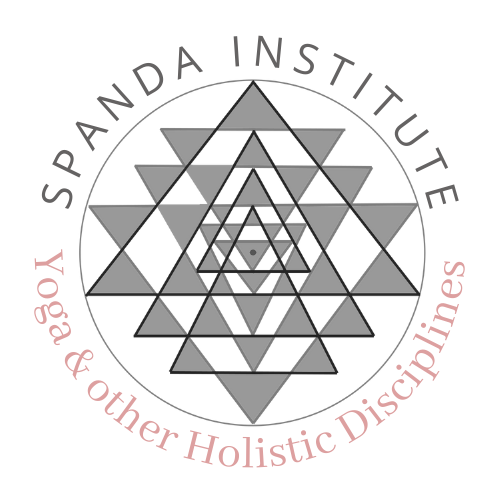Why I never teach or practice shoulder stand (and what I do instead)
Salamba Sarvangasana, or supported shoulder stand, is one of those asanas included in almost all postural yoga methods. It is said to be very beneficial, so much so that it was, at some point, crowned the queen of asanas. But, does it have all the benefits claimed and does it rightfully wear that crown? Unfortunately, not. So why is everyone still doing it? When something is so embedded in the tradition, in this case, yoga tradition, it is hard to dismiss it, even if it can potentially cause harm. So, instead of just discontinuing something that doesn't serve us, such as an asana in which the risks far outweigh the benefits, we keep bending over backwards to make it work for the sake of tradition.
Rebel, rebel
But let's start at the beginning. About ten or so years ago, I completely stopped practising shoulder stands. I had suffered from neck muscle spasms at least once a month, and once I ran out of excuses (it's the pillow, it's my sleeping position, it's the draft, etc), I realised it could be connected to my practice. Guessing it could be a culprit, I took out shoulder stand and halasana (plough) from my practice and, miraculously, my neck spasms disappeared. Regardless, I still taught them for a while longer. I, too, was trying to make them safer by folding blankets and instructing students not to go too deep. I didn’t want to be seen as that much of a rebel. A yoga teacher teaching asana, must include a shoulder stand, right? Wrong. Thankfully, it didn’t take me long to realise that my students safety is more important than tradition. I stopped teaching shoulder stand and halasna, asked other teachers in my studio not to teach it, and completely took it out of the method we are teaching in Spanda Yoga Teacher Training courses. I/we teach legs up the wall or block under the sacrum (Viparita Karani) instead.
I dethroned the queen, and I didn't stop there. It was like an awakening. I looked at other asanas and practices I was unsure about, weighted benefits and risks, consulted specialists, and took them out if they didn't make the cut. I have done tons of research, learned so much more about the body/mind, and discussed asanas and other deeply rooted practices with many professionals, such as physiotherapists, osteopaths, neurologists, and neuroscientists, and cleaned up what I teach and what we teach at our YTTs. I see Yoga as a healing discipline and believe that everything we do on the mat should serve that purpose and no other.
Shoulder stand risks
So, what is the problem with the shoulder stand? When you look at the neck in this asana, you will notice it is flexed by almost 90 degrees. However, the deep flexion does not happen from all the cervical vertebrae but only the lower ones. It wouldn't be such an issue when standing and dropping your chin to your chest for a deep neck flexion. It is an issue, however, if you are putting almost your whole body weight on your flexed neck supported only with your upper arms. This position overstretches the muscles and can damage nerves. When you are in any deep stretch, you are not only stretching the muscles; you are stretching all the soft tissue, including the peripheral nerves. Like some soft tissue, nerves don't have the same elasticity as muscles and should not be overstretched. When overstretched and compressed, which is the case in asanas such as the shoulder stand, plough, and similar, this can cause nerve damage and symptoms such as pins and needles, muscle weakness, and numbness. Protracted necks, or head forward position which many of us suffer from due to computers and phones, only adds to the risk.
If you have any vertebrae or disk damage in the cervical spine, the last thing you want is to put so much weight on your flexed neck. I was having spasms because I had two herniated disks in my cervical spine (I didn't know this at the time). My body responded by immobilising the injured area to minimise movement and injury. This is what sometimes causes long-lasting muscle tightness and spasms. Finally, full inversions such as a shoulder stand increase blood pressure and are contraindicated for people with hypertension, glaucoma, blood clots, heart disease, and pregnant women.
Are there any benefits of inversions?
While some in the yoga community swear by them, the research involving inversion therapy is inconclusive and lacks concrete evidence. I say 'inversion therapy' and not research on shoulder stands or headstands because these are not interesting enough to prompt serious research, so we need to get creative. Research on inversion therapy usually looks at full body inversion and involves specially designed tables or gravity inversion boots and anklets. Some studies showed there are benefits of such full inversions for people with lower back pain, sciatica and scoliosis, and poor circulation. However, these are more passive inversions, and fully inverted asanas are not passive, they involve engaging most muscles. So it is fair to conclude that, if done correctly, some, such as a headstand or a handstand, might benefit circulation and are good exercises for the body, especially the core. They should still be avoided if you have hypertension, glaucoma, blood clots, heart disease, or are pregnant.
Leg inversions, such as legs up the wall, or Viparita Karani with a block/pillow under the sacrum, are not full inversions and thus reduce risks while reaping some benefits such as improved circulation. It is good practice after a long day, especially after standing a lot. It feels good after a dynamic asana practice as it is a more restorative asana and can induce a relaxation response.
Summary
Over the centuries, yogis have come up with many brilliant practices, but also some questionable ones - just like any other discipline. Yoga has also evolved over the years to serve humans of that age, this is not new. What might have benefited a young man living in rural India 300 years ago, may not benefit a stressed-out manager living in 21st century. Yoga inspired other disciplines but was also changed and inspired by them. Today it is changed and modified with scientific research, to serve the health and balance of a 21st-century human. So, whatever practice you choose to do, even if this is a shoulder stand, be clear if it serves you or if you serve it for the sake of some tradition. Just because someone who possibly knew little about human anatomy and physiology crowned an asana once doesn't mean it's beneficial for you.
Nina Vukas
Nina is the founder of Spanda Institute, Program Director and a Lead Teacher for Advanced Study Programs. She has been a Yoga practitioner since 1998, started teaching full time in 2005, and has been educating yogis on their journey towards becoming Yoga Teachers, as well as educating Yoga Teachers to advance their knowledge and teaching skills since 2009. Nina is also a Yoga Therapist, Somatic Psychotherapist, Mindfulness and Meditation teacher, and forever a student. Currently, she is studying Psychology.



